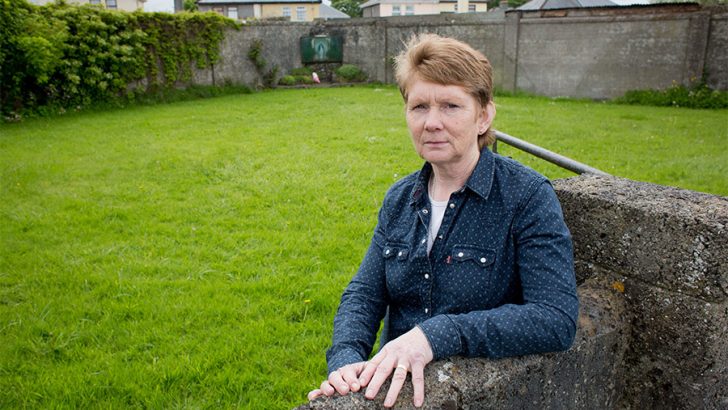The stigmatising of unmarried mothers and their babies was wrong, but we should know that it was not confined to Ireland or Catholicism, writes David Quinn
On October 30, the long-awaited report of the Mother and Baby Homes Commission of Investigation will be delivered to the Government.
Ahead of the delivery and publication of the report, the Government is seeking to pass a law which will determine what aspects of the work of the commission will remain confidential and which will not. Many people who spoke to the commission did so under a promise that their testimony would be confidential and that their identities would never be revealed.
The commission was established after local historian, Catherine Corless, tracked down records showing that 800 babies had died at the Tuam Mother and Baby home over a 40-year period ending in 1961.
A large majority of the deaths took place before the development of modern vaccinations and anti-biotics.
Findings
When Mrs Corless published her findings there was a huge national outcry and the story was widely reported. Reports mainly fastened on was the allegation that the bodies of the infants had been dumped in a septic tank.
Some remains have been found in an underground structure, but we do not know yet what the original purpose of that structure was.
The report of the commission apparently runs to thousands of pages. Its task was huge, and the investigation has taken far longer than originally envisaged. It has cost in the region of €14 million.
Ahead of the publication of the report, it is worth reminding ourselves of its terms of reference.
Among them were:
– Investigating the circumstances and arrangements for the entry of single women into mother and baby homes and county homes (which were State-run).
– Investigating the living conditions of residents.
– Investigating the mortality rate and comparing it with the mortality rate elsewhere in society.
– Investigating what happened to the remains of women and babies after they died.
– Investigating the extent to which vaccine trials were conducted in the institutions.
– Investigating how adoptions were conducted.
We already know much of what it will find. It will confirm that unmarried mothers and their children were harshly treated in Ireland in the past, that conditions at many of the homes were often extremely bad, that babies were often placed for adoption against the wishes of the mothers, that burial practices were frequently terrible and haphazard, that common burial plots were the norm and no names appeared on gravestones, that the morality rate in the homes was high even by the standards of the time.
Unfortunately, to judge from the terms of reference, the commission will not be looking at the situation overseas at the same time. This remains to be seen, but if it is the case, it will be a big lacuna in the investigation.
In Ireland, during the era in question, who was making significant efforts to help keep unmarried mothers and their babies together? The only person I can find is Frank Duff…”
The official report by Martin McAleese into the Magdalene homes did look into the international situation. It found that Magdalene homes were neither particularly Irish nor Catholic as institutions. There was many in Britain and America, for instance, and they were generally not run by Catholic organisations.
If the commission did look at the situation in other countries, it would find that mother and baby homes were once commonplace and that unmarried mothers were routinely stigmatised and their babies taken from them and placed for adoption.
This was the case whether the society was Catholic, Protestant or secular. In social democratic Sweden, it was not uncommon during the period from the 1930s until the 1970s for unmarried mothers to be sterilised.
Commonplace
In Britain, mother and baby homes were commonplace until the 1970s, when abortion became widespread. Only 11% of the homes were run by the Catholic Church.
The peak year for adoptions in Britain was 1968, when 16,000 babies were adopted.
A Church of England spokesman said in November 2017 after a documentary about adoption scandals in Britain was aired: “What was thought to be the right thing to do at the time has caused great hurt. That is a matter of great regret.”
When you point out what was happening overseas, you are often accused of ‘whataboutery’, but singling out Ireland or singling out the Catholic Church for special blame can only be countered by pointing out what happened elsewhere during the same period.
In Ireland, during the era in question, who was making significant efforts to help keep unmarried mothers and their babies together? The only person I can find is Frank Duff, founder of the Legion of Mary, who made huge efforts, with very scarce resources to do so.
In a talk to The Iona Institute (which I head) in 2017, Mr Duff’s biographer, Finola Kennedy, pointed out how different Mr Duff’s attitude towards unmarried mothers was, compared with the common attitude at the time.
Mr Duff, says Mrs Kennedy, “compared the harsh treatment of mothers with that of those who fathered children outside marriage”.
In the decades following its opening in 1930, the Regina Coeli hostel helped to keep 3,500 children with their mothers. Mr Duff was a great Christian and humanitarian and his cause for canonisation is ongoing.
Has the ‘problem of unwanted babies’ gone away in the meantime? It has not. Last year, there were 6,666 abortions in Ireland. This will not stop today’s Ireland sitting in judgement on yesterday’s Ireland when the report of the Mother and Baby Home Commission is released.


 David Quinn
David Quinn Catherine Corless
Catherine Corless 